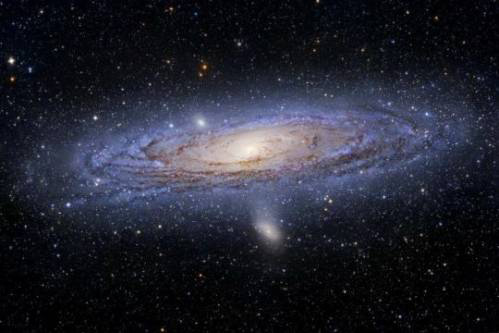Planets as small as the Earth are more prevalent than large ones in the Milky Way galaxy, according to a new study released by NASA's Jet Propulsion Loboratory (JPL) on Thursday, Xinhua reported.
Using the W.M. Keck Observatory in Hawaii, astronomers found that nearly one in four stars similar to the sun may host planets as small as Earth, said the study, which will appear in the Oct. 29 issue of the journal Science, the JPL said.
The study, funded by NASA and the University of California, is the most extensive and sensitive planetary census of its kind, the JPL said.
The astronomers made the discovery in a five-year study to search 166 sun-like stars near our solar system for planets of various sizes, said the JPL in Pasadena, Los Angeles.
"We studied planets of many masses -- like counting boulders, rocks and pebbles in a canyon -- and found more rocks than boulders, and more pebbles than rocks. Our ground-based technology can't see the grains of sand, the Earth-size planets, but we can estimate their numbers," said Andrew Howard of the University of California, Berkeley, lead author of the new study.
"Earth-size planets in our galaxy are like grains of sand sprinkled on a beach -- they are everywhere," said Howard.
The research provides a tantalizing clue that potentially habitable planets could also be common, the JPL said, adding that these hypothesized Earth-size worlds would orbit farther away from their stars, where conditions could be favorable for life.
Howard and his planet-hunting team looked for planets within 80-light-years of Earth, using the radial velocity, or "wobble," technique.
They measured the numbers of planets falling into five groups, ranging from 1,000 times the mass of Earth, or about three times the mass of Jupiter, down to three times the mass of Earth. The search was confined to planets orbiting close to their stars -- within 0.25 astronomical units, or a quarter of the distance between our sun and Earth.
The study found that smaller planets outnumber larger ones: 23 percent of sun-like stars in our galaxy host smaller planets, the Earth-sized ones, orbiting in the hot zone close to a star; only 1.6 percent of stars were found to host giant planets orbiting close in; about 6.5 percent of stars were found to have intermediate-mass planets, with 10 to 30 times the mass of Earth -- planets the size of Neptune and Uranus; and 11.8 percent had the so-called "super- Earths," weighing in at only three to 10 times the mass of Earth.
"During planet formation, small bodies similar to asteroids and comets stick together, eventually growing to Earth-size and beyond. Not all of the planets grow large enough to become giant planets like Saturn and Jupiter," Howard said. "It's natural for lots of these building blocks, the small planets, to be left over in this process."






